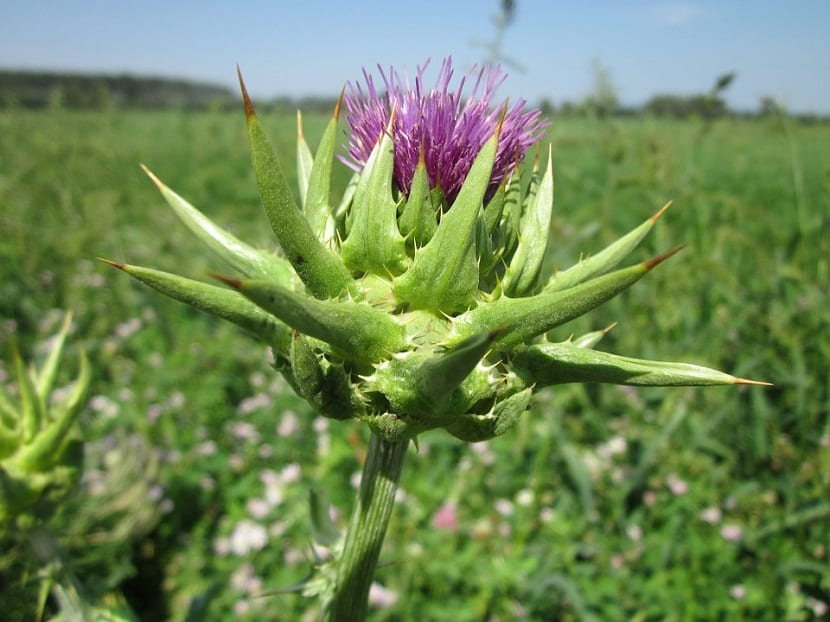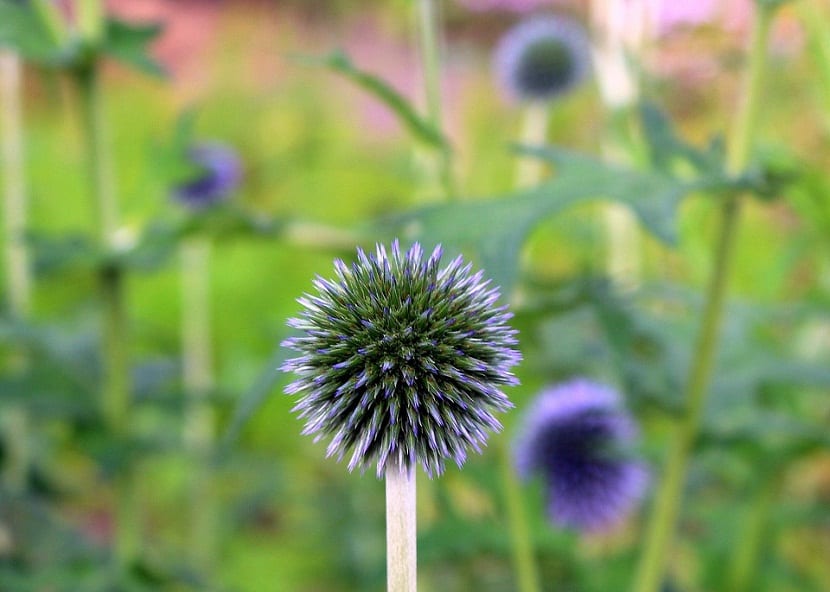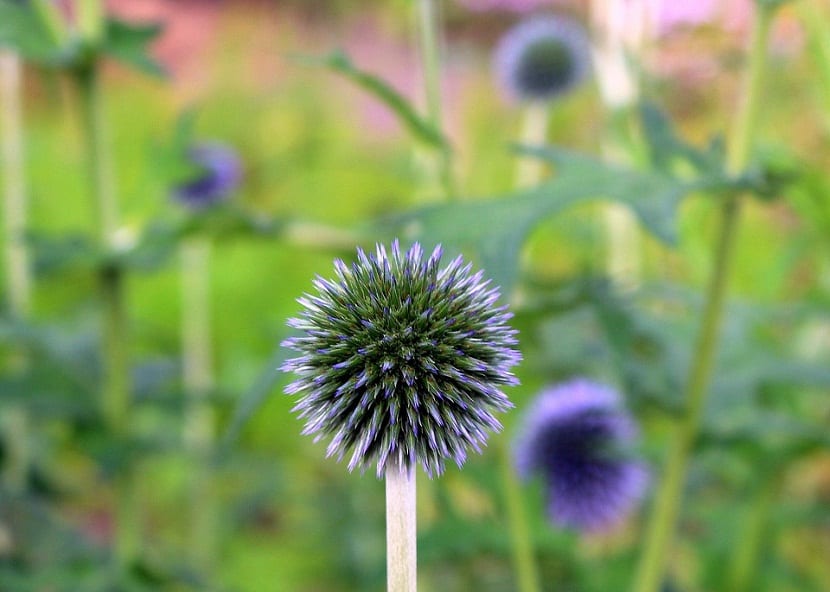
Silybum marianum Gaertn, commonly known as milk thistle or milk thistle, is the most common plant investigated for the treatment of liver disease. Its therapeutic properties are due to the presence of silymarin, a mixture of three flavonolignans (silybin, silidianin and silbristin).
The plant is native to Europe and grows freely in the United States and South America and although often considered an invasive herbHowever, due to its health benefits, milk thistle has become very popular and today we can find it planted in many gardens and backyards.
Characteristics of milk thistle

Milk thistle is a robust plant, biennial or annual, that grows up to a meter tall and it has a branching stem, a plant that takes two years to complete the growth cycle.
Is better known to have a single large flower and leaves that are somewhat spiny to the touch if you're not careful. Each thistle flower can produce almost 200 seeds, with an average of 6.350 seeds per plant in a year.
The flower is purple in color and averages between 4 and 12 cm long and wide. Flowers from June to August in the Northern Hemisphere and from December to February in the southern hemisphere.
Milk thistle gets its name from the milky sap that comes out of the leaves when they are broken. The leaves are oblong to lanceolate with spiny edges, they have unique white markings that according to legend, were the milk of the Virgin Mary. The tops and seeds are used to make medicine.
And it is that according to comments, the Virgin Mary traveling from Egypt to Palestine, would have given birth to the baby Jesus about thistle forest.
Some drops of its milk fell on the leaves, creating the characteristic white streaks for this species. This legend is perhaps also the origin of a traditional indication, whose effectiveness has never been scientifically proven, that you want milk thistle to promote lactation.
Cultivation of milk thistle
To grow milk thistle outdoors, you need to spread the seed directly over the desired area in the spring or fall. Thistle seeds only take two weeks to germinate and since it grows in groups, it is advisable to space the plant 30-38 cm apart.
It is successful in any fertile garden soil that is well drained, but prefers calcareous soil and a sunny position.
If sown in situ during March or April, the plant will generally flower in summer. The seed can also be sown from May to August and will normally wait until the following year to flower and thus behave like a biennial plant.
The best edible roots should be produced from a May to June sowing, while the spring and summer sowing should ensure the supply of edible leaves throughout the year.
Milk thistle care
The nutrient requirements of this crop are low to moderate, since are adapted to poor quality soils and to many different growing conditions.
Milk thistle is considered drought resistant and normal rains are often sufficient. In a Mediterranean environment, under severe drought conditions, crops must be irrigated during growth and seed filling. It cannot grow in the shade.
A limiting factor in milk thistle production is weed interference. The herbicides Pendimethalin and Metribuzin are safe for weed control in milk thistle, both alone and in combination.
Benefits of Milk Thistle

Originally from the Mediterranean, milk thistle is used to combat digestive disorders, liver and gallbladder diseases.
The Greeks had already noticed its therapeutic potential and used it during ancient times to cure liver disorders.
Milk thistle contains silymarin, the active ingredient in the plant, being this one who provides its therapeutic effects. Depending on the difficulty to relieve, the recommended dose of silymarin varies, therefore, it is necessary to consult your doctor before starting a cure by taking milk thistle.
In addition, for pregnant and lactating women, its consumption is contraindicated.
I am experimenting with growing milk thistle…thanks for the info
We hope it goes well for you 🙂